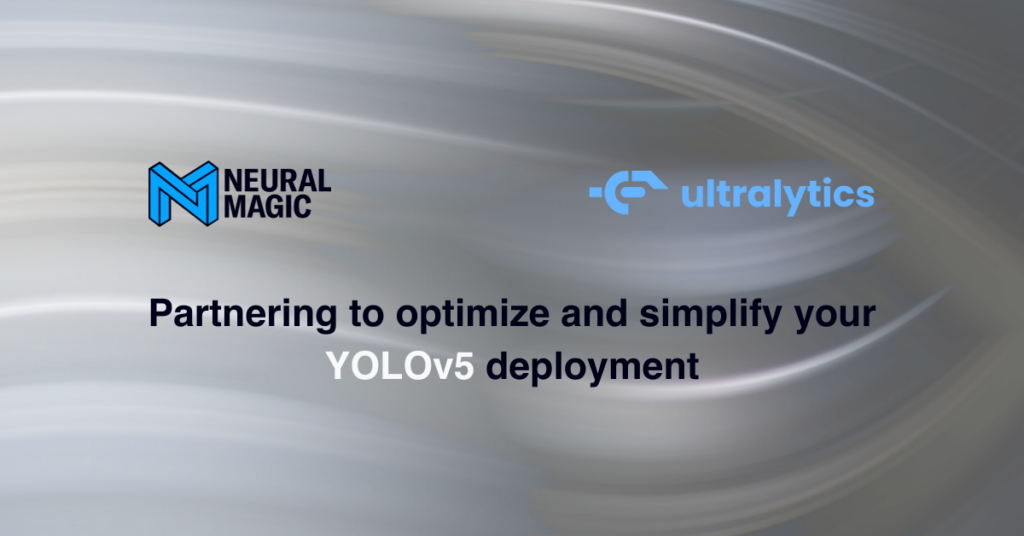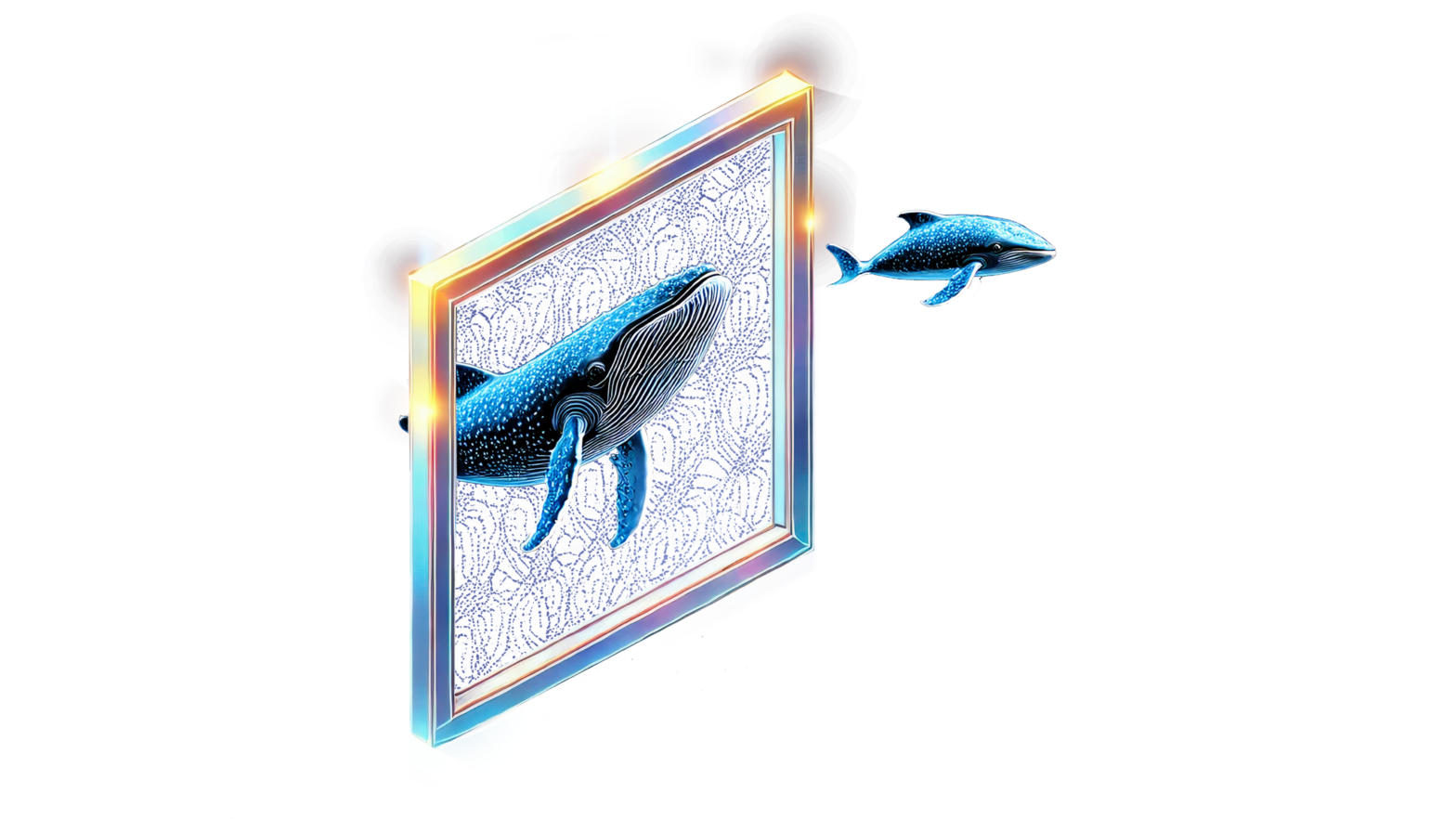Jan 06, 2023
Author(s)
We’ve partnered with Ultralytics to optimize and simplify your YOLOv5 deployment.
Want to accelerate the deployment of your YOLOv5 models? We’ve got you covered! Introducing our newest partner, Ultralytics, who makes artificial intelligence easy. While Ultralytics YOLOv5 object detection architectures and pre-trained models offer popular vision AI, Neural Magic provides software tools that emphasize peak model performance and workflow simplicity. So, it’s only natural that we’ve come together to offer a seamless experience for your YOLOv5 deployment.
With our recent 1.3 release, Neural Magic has released sparse checkpoints for each version of Ultralytics YOLOv5 object detection architectures - from YOLOv5n to YOLOv5x6. Check them out in the SparseZoo!
DeepSparse is Neural Magic’s CPU inference runtime, which takes advantage of sparsity and low-precision arithmetic within neural networks to offer exceptional performance on commodity hardware. For instance, compared to the ONNX Runtime baseline, DeepSparse offers a 5.8x speed-up for YOLOv5s running on the same machine!
For the first time, your deep learning workloads can meet the performance demands of production without the complexity and costs of hardware accelerators. Put simply, DeepSparse gives you the performance of GPUs and the simplicity of software:
- Flexible Deployments: Run consistently across cloud, data center, and edge with any hardware provider
- Infinite Scalability: Scale out with standard Kubernetes, vertically to 100s of cores, or fully abstracted with serverless
- Easy Integration: Use clean APIs for integrating your model into an application and monitoring it in production
Achieve GPU-Class Performance on Commodity CPUs
DeepSparse takes advantage of model sparsity to gain its performance speedup.
Sparsification through pruning and quantization allow order-of-magnitude reductions in the size and compute needed to execute a network while maintaining high accuracy. DeepSparse is sparsity-aware, skipping the multiply-adds by zero and shrinking the amount of compute in a forward pass. Since sparse computation is memory bound, DeepSparse executes the network depth-wise, breaking the problem into Tensor Columns, which are vertical stripes of computation that fit in cache.
Create a Sparse Version of YOLOv5 Trained on Custom Data
Neural Magic's open-source model repository, SparseZoo, contains pre-sparsified checkpoints of each YOLOv5 model. Using SparseML, which is integrated with Ultralytics, you can fine-tune a sparse checkpoint onto your data with a single CLI command.
Check out Neural Magic’s YOLOv5 documentation for more details.
Deploy YOLOv5 With DeepSparse
Install DeepSparse
Run the following to install DeepSparse. We recommend you use a virtual environment with Python.
pip install deepsparse[server,yolo,onnxruntime]Collect an ONNX File
DeepSparse accepts a model in the ONNX format, passed either as:
- A local path to an ONNX model
- A SparseZoo stub that identifies a model in the SparseZoo
We will compare the standard dense YOLOv5s to the pruned-quantized YOLOv5s, identified by the following SparseZoo stubs:
zoo:cv/detection/yolov5-s/pytorch/ultralytics/coco/base-none
zoo:cv/detection/yolov5-s/pytorch/ultralytics/coco/pruned65_quant-noneDeploy a Model
DeepSparse offers convenient APIs for integrating your model into an application.
To try the deployment examples below, pull down a sample image with the following:
wget -O basilica.jpg https://raw.githubusercontent.com/neuralmagic/deepsparse/main/src/deepsparse/yolo/sample_images/basilica.jpgPython API
Pipelines wrap pre-processing and output post-processing around the runtime, providing a clean interface for adding DeepSparse to an application. The DeepSparse-Ultralytics integration includes an out-of-the-box Pipeline that accepts raw images and outputs the bounding boxes.
Create a Pipeline and run inference:
from deepsparse import Pipeline
# list of images in local filesystem
images = ["basilica.jpg"]
# create Pipeline
model_stub =
"zoo:cv/detection/yolov5-s/pytorch/ultralytics/coco/pruned65_quant-none"
yolo_pipeline = Pipeline.create(
task="yolo",
model_path=model_stub,
)
# run inference on images, receive bounding boxes + classes
pipeline_outputs = yolo_pipeline(images=images, iou_thres=0.6, conf_thres=0.001)
print(pipeline_outputs)If you are running in the cloud, you may get an error that open-cv cannot find libGL.so.1. Running the following on Ubuntu installs it:
apt-get install libgl1-mesa-glxHTTP Server
DeepSparse Server runs on top of the popular FastAPI web framework and Uvicorn web server. With just a single CLI command, you can easily set up a model service endpoint with DeepSparse. The Server supports any Pipeline from DeepSparse, including object detection with YOLOv5, which enables you to send raw images to the endpoint and receive the bounding boxes.
Spin up the Server with the pruned-quantized YOLOv5s:
deepsparse.server \
--task yolo \
--model_path zoo:cv/detection/yolov5-s/pytorch/ultralytics/coco/pruned65_quant-noneThis following is an example request using Python's requests package:
import requests, json
# list of images for inference (local files on client side)
path = ['basilica.jpg']
files = [('request', open(img, 'rb')) for img in path]
# send request over HTTP to /predict/from_files endpoint
url = 'http://0.0.0.0:5543/predict/from_files'
resp = requests.post(url=url, files=files)
# response is returned in JSON
annotations = json.loads(resp.text) # dictionary of annotation results
bounding_boxes = annotations["boxes"]
labels = annotations["labels"]Annotate CLI
You can also use the annotate command to have the engine save an annotated photo on disk. Try --source 0 to annotate your live webcam feed!
deepsparse.object_detection.annotate --model_filepath zoo:cv/detection/yolov5-s/pytorch/ultralytics/coco/pruned65_quant-none --source basilica.jpgRunning the above command will create an annotation-results folder and save the annotated image inside.
Benchmark Performance
Using DeepSparse's benchmarking script, we will compare DeepSparse's throughput to ONNX Runtime's throughput on YOLOv5s.
The benchmarks were run on an AWS c6i.8xlarge instance (16 cores).
Batch 32 Performance Comparison
ONNX Runtime Baseline
At batch 32, ONNX Runtime achieves 42 images/sec with the standard dense YOLOv5s:
deepsparse.benchmark zoo:cv/detection/yolov5-s/pytorch/ultralytics/coco/base-none -s sync -b 32 -nstreams 1 -e onnxruntime
> Original Model Path: zoo:cv/detection/yolov5-s/pytorch/ultralytics/coco/base-none
> Batch Size: 32
> Scenario: sync
> Throughput (items/sec): 41.9025DeepSparse Dense Performance
While DeepSparse offers its best performance with optimized sparse models, it also performs well with the standard dense YOLOv5s.
At batch 32, DeepSparse achieves 70 images/sec with the standard dense YOLOv5s—a 1.7x performance improvement over ORT!
deepsparse.benchmark zoo:cv/detection/yolov5-s/pytorch/ultralytics/coco/base-none -s sync -b 32 -nstreams 1
> Original Model Path: zoo:cv/detection/yolov5-s/pytorch/ultralytics/coco/base-none
> Batch Size: 32
> Scenario: sync
> Throughput (items/sec): 69.5546DeepSparse Sparse Performance
When sparsity is applied to the model, DeepSparse's performance gains over ONNX Runtime is even stronger.
At batch 32, DeepSparse achieves 241 images/sec with the pruned-quantized YOLOv5s—a 5.8x performance improvement over ORT!
deepsparse.benchmark deepsparse.benchmark zoo:cv/detection/yolov5-s/pytorch/ultralytics/coco/pruned65_quant-none -s sync -b 32 -nstreams 1
> Original Model Path: zoo:cv/detection/yolov5-s/pytorch/ultralytics/coco/pruned65_quant-none
> Batch Size: 32
> Scenario: sync
> Throughput (items/sec): 241.2452Batch 1 Performance Comparison
DeepSparse is also able to gain a speed-up over ONNX Runtime for the latency-sensitive, batch 1 scenario.
ONNX Runtime Baseline
At batch 1, ONNX Runtime achieves 48 images/sec with the standard, dense YOLOv5s.
deepsparse.benchmark zoo:cv/detection/yolov5-s/pytorch/ultralytics/coco/base-none -s sync -b 1 -nstreams 1 -e onnxruntime
> Original Model Path: zoo:cv/detection/yolov5-s/pytorch/ultralytics/coco/base-none
> Batch Size: 1
> Scenario: sync
> Throughput (items/sec): 48.0921DeepSparse Sparse Performance
At batch 1, DeepSparse achieves 135 items/sec with a pruned-quantized YOLOv5s—a 2.8x performance gain over ONNX Runtime!
deepsparse.benchmark zoo:cv/detection/yolov5-s/pytorch/ultralytics/coco/pruned65_quant-none -s sync -b 1 -nstreams 1
> Original Model Path: zoo:cv/detection/yolov5-s/pytorch/ultralytics/coco/pruned65_quant-none
> Batch Size: 1
> Scenario: sync
> Throughput (items/sec): 134.9468Since c6i.8xlarge instances have VNNI instructions, DeepSparse's throughput can be pushed further if weights are pruned in blocks of 4.
At batch 1, DeepSparse achieves 180 items/sec with a 4-block pruned-quantized YOLOv5s—a 3.7x performance gain over ONNX Runtime!
deepsparse.benchmark zoo:cv/detection/yolov5-s/pytorch/ultralytics/coco/pruned35_quant-none-vnni -s sync -b 1 -nstreams 1
> Original Model Path: zoo:cv/detection/yolov5-s/pytorch/ultralytics/coco/pruned35_quant-none-vnni
> Batch Size: 1
> Scenario: sync
> Throughput (items/sec): 179.7375And voila! You’re ready to optimize your YOLOv5 deployment with DeepSparse!
Get Started with DeepSparse
DeepSparse Community is free for research and testing. Check out Neural Magic’s documentation.
DeepSparse Enterprise requires a license for production use. Start your 90-day free trial.
For user help or questions about DeepSparse, sign up or log in to our community Slack. Bugs, feature requests, or additional questions can also be posted to our GitHub Issue Queue.






